
Welcome to this week’s ‘Final Frontier Friday’! This time around, we’re taking a look back at ‘Star Trek: The Motion Picture’ in honor of the landmark film’s fortieth anniversary.
By the end of 1969, ‘Star Trek’ was dead. The show had been cancelled, and no matter how disappointed its fanbase may have been (to say nothing of all the actors, writers and behind the scenes staff who now needed to find new jobs), there was no reason to expect that there’d ever be any more of it. That was just how the television industry worked at the time. But then a funny thing happened. Despite having fallen short of one hundred episodes (traditionally, the point at which a show is considered to have produced enough material to have a viable commercial afterlife), it was sold into off-network syndication. It was only then, in reruns, that a show that had been at best a modest success during its initial run truly found an audience.
So significant was this post-mortem boost in popularity that by 1972 the Associated Press had come to describe ‘Star Trek’ as “the show that won’t die.” As a result of this enduring (and, it seemed, ever-increasing -popularity), ‘Star Trek: The Animated Series‘ was launched in the fall of 1973. But this was the 1970s, and despite the show’s impressive behind the scenes pedigree (including nearly the entire original cast and several returning writers), animation was still firmly thought of as kids’ stuff (a state of affairs that lasted roughly from the demise of the satire-laden ‘Rocky and Bullwinkle’ to the debut of ‘The Simpsons’). This effectively rendered the animated series a placeholder of sorts (though considering it won ‘Star Trek’ its first Emmy, it was a hell of a placeholder), though the continuing success of the budding franchise meant that some sort of “proper” (read: “live action”) follow up was all but inevitable. The only question was what form it would take. And that was a question that Paramount (which had since acquired Desilu, and ‘Star Trek’ along with it) would spend much of the seventies trying to answer.
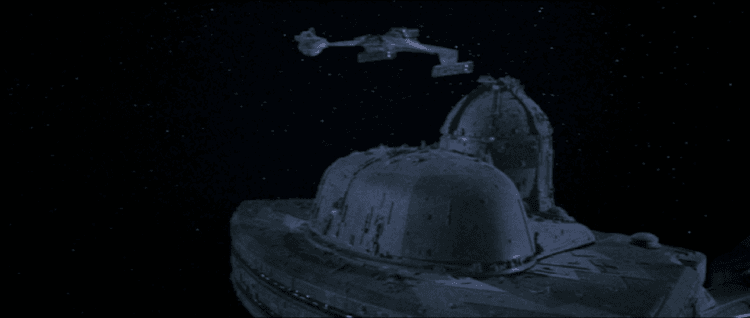
Depending on who you asked and when you asked them, these stories might have been produced as a theatrical feature, a TV movie, one of a series of movies-of-the-week with the potential to act as a launching pad for a full-blown television revival… The only thing anyone seemed certain of was that they wanted to make more ‘Star Trek’. This period saw by the latter half of the seventies, all of this chaos had finally coalesced into ‘Star Trek: Phase II’, a sequel series that was meant to serve as anchor programming for Paramount’s aborted fourth network. (If this sounds familiar, that’s because it’s exactly what happened when Paramount finally did launch a network – UPN – some twenty years later. In that case, the tentpole show was ‘Star Trek: Voyager‘). Scripts were written, actors were cast, test footage was recorded. By any reasonable measure, ‘Phase II’ was coming along quite nicely.
And then ‘Star Wars’ happened.
It’s a cliché to say that you can break the history of science fiction cinema into two periods: “Before ‘Star Wars'” and “After ‘Star Wars’,” but it’s a cliché that has the benefit of being true. The out-of-nowhere success of George Lucas’s ode to Flash Gordon serials, Kurasawa films, and the Campbellian monomyth marked a seismic shift not just in the landscape of science fiction but arguably of the film business as a whole. Part of that shift was what you might call a gold rush in the science fiction genre the end result of which was the greenlighting of everything from ‘Battlestar Galactica‘ and ‘Alien‘. And of course, it also gave us ‘Star Trek: The Motion Picture’. As Paramount (along with every other studio under the sun) dug through its archives in search of sci-fi properties with which to cash in of the success of ‘Star Wars’, someone pointed out the obvious – ‘Star Trek’.
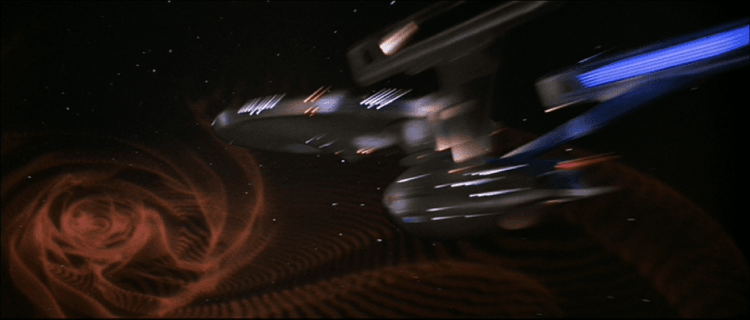
It was official: ‘Star Trek’ would be returning, and it would do so as a feature film with acclaimed director Robert Wise at the helm and the most generous budget ‘Trek’ had been afforded to date. The downside was that this meant ‘Phase II’ was now a thing of the past, but it wasn’t a total loss as the pilot script (titled ‘In Thy Image’) would serve as the basis for the film. But even with all of this promise, Hollywood is still Hollywood and it would be anything but smooth sailing for ‘The Motion Picture’. Indeed, the production would be one defined by turmoil.
Most notably, this included dueling rewrites from Roddenberry and Harold Livingston (Livingston had written ‘In Thy Image’ and was subsequently brought on to ‘The Motion Picture’). Roddenberry would rewrite Livingston’s pages, Livingston would rewrite the rewrites, and Roddenberry would respond in kind ad infinitum. So vicious was this clash of egos and creative visions (which eventually escalated to Writers Guild arbitration), that it’s a minor miracle that the cast was ever able to get off book. Not only that, but this ongoing inability to lock down the script exacerbated the other big issue, which was persistent delays to the film’s visual effects. After all, it’s hard to deliver your effects work on time and under budget if entire sequences are being added and deleted throughout production. Ultimately, the final effects came in so late that the film came dangerously close to missing its premier and was never able to go through the usual process of soliciting audience feedback through preview screenings.
The end product of all that behind the scenes insanity is that the original theatrical cut of ‘Star Trek: The Motion Picture’ is really more akin to a rough cut, a “finished product” that Wise was never quite satisfied with, at least in its original form. Released on DVD in 2001, the Director’s Edition of the film finally allowed Wise and a team of collaborators to revisit the film for a long overdue re-edit. Some scenes were restored, others trimmed. Additionally, a number of unfinished special effects sequences were finally completed while others were touched up with the aid of CGI.
Even for me, that was wordy, and yet it barely scratches the surface.
Literal volumes have been written about ‘Star Trek: The Motion Picture’ over the years, but I only have so much space here. (And there’s only so much of this I’m willing to inflict on my editor!) But if you’d like to get deeper into the making of ‘The Motion Picture’ and this period of ‘Star Trek’ history more generally, there are plenty of reference works available. Some personal favorites are ‘Return to Tomorrow – The Filming of ‘Star Trek: The Motion Picture”, ”Star Trek: Phase II’: The Lost Series’, and William Shatner’s ‘Star Trek Movie Memories’.
But you didn’t come here for a summer reading list, did you? So with all that history and context finally out of the way, let’s get on to the finished film!
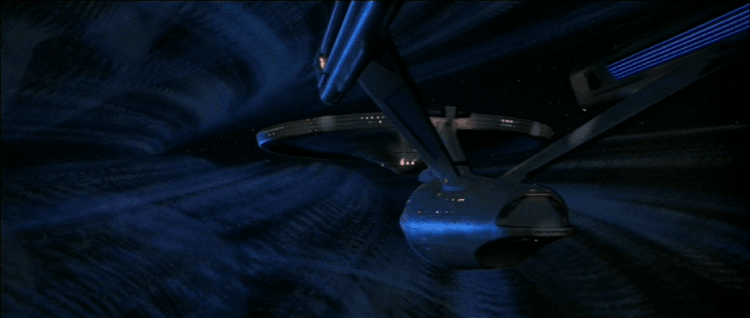
In deep space, a trio of Klingon warships approach and fire on a massive energy cloud that destroys them without breaking a sweat. Starfleet’s Epsilon IX listening station intercepts the Klingon’s distress signal and determines that the cloud is headed straight for Earth. Not long after, Epsilon IX is itself destroyed by the cloud. On Vulcan, Spock is seen at the culmination of his attempt at kolinahr – the purging of all emotion. During a ritual mind meld, a Vulcan elder senses that an intelligence out in space has stirred Spock’s human side and tells him that he has failed the kolinahr and will not find what he seeks on Vulcan. On Earth, Kirk – now an admiral – arrives at Starfleet Headquarters for a meeting with Admiral Nogura. In that meeting, Kirk takes advantage of the cloud crisis to regain command of the Enterprise, which is being sent to intercept, study, and if possible defend Earth from whatever danger the cloud represents. Later, Kirk meets up with Scotty at an orbital facility and they take a shuttle to the newly refit Enterprise (look, just because the movie lingers on it doesn’t mean I have to). Once aboard, Kirk makes his way to the bridge where he is warmly greeted by Sulu, Chekov, and Uhura, who have already heard that he’s back in command. The one person aboard who hasn’t heard? The ship’s actual captain, Will Decker, who Kirk meets up with and breaks the news to in engineering. Decker takes it about as well as you might expect. Suddenly, an alarm sounds. The transporter is on the blink, and the malfunction has come just as Science Officer Sonak and another individual are beaming up. Despite their best efforts, they aren’t able to complete the transport, and whatever materializes back on Earth is basically dead on arrival. After collecting himself, Kirk assigns Decker to fill in at the science station until they can replace Sonak. Shortly thereafter, Kirk assembles the crew on the recreation deck to brief them on their mission.
With the transporter repaired, a few final crew members come aboard, including Lieutenant Ilia, a Deltan navigator who was once involved with Decker, and a grumpy-even-for-him Dr. McCoy, who has been pulled out of retirement – “drafted,” as he puts it – at Kirk’s behest. With repairs completed, the Enterprise leaves the solar system, but when they jump to warp, a problem with the engines pulls them into a wormhole. An asteroid that was pulled in with them is closing on the ship and Kirk gives the order to destroy it with phaser fire. Decker countermands this in favor of torpedoes. The destruction of the asteroid knocks them out of the wormhole and Kirk wastes no time in chewing out Decker, who calmly tells Kirk that the engine issue rendered the phasers useless, leaving Kirk with the realization that his unfamiliarity with the redesigned Enterprise nearly got the crew killed.
Soon after, a shuttle arrives to drop off a passenger, who turns out to be Spock. Though the others are delighted to see him (and Kirk wastes no time accepting his offer to serve as science officer), the Vulcan is more aloof than usual. With Spock’s help, the engines are soon back online and the Enterprise, at last, approaches the cloud. After a tense confrontation that culminates in a lightning bolt-like probe appearing on the bridge, tapping into the ship’s computer, and vanishing with Ilia in tow. In the aftermath, a tractor beam locks onto the Enterprise, drawing the ship through an aperture in the cloud, releasing them once they’re trapped inside.
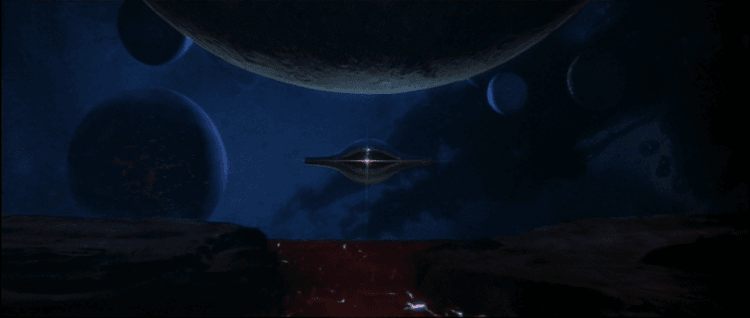
Kirk joins a security team as they respond to an intruder alert in crew quarters. upon arriving, they find Ilia – or more accurately, a probe that has assumed Ilia’s form – in the sonic shower. “Ilia” explains that she has been sent by an entity called V’Ger to observe the “carbon units” – humans – that are “infesting” the Enterprise. As McCoy examines “Ilia” in sickbay, Decker enters and Spock notes that the probe refers to him as “Decker” rather than “Decker unit”, leading him to speculate that the real Ilia’s memories and emotions may have been duplicated along with her body. Kirk thus assigns Decker to chaperone the probe, reasoning that his presence might bring something of Ilia to the fore.
While Decker attends to Ilia, Spock covertly dons a thruster suit, steps out an airlock, and ventures into the cloud. As he proceeds, Spock sees images of planets, stars, and more that he surmises to be recordings of V’Ger’s journey, culminating in the Epsilon IX station. Suddenly, the image of Ilia appears before him with a sensor in her neck – just like the probe. Deciding there must be some significance to the sensor, Spock attempts to mind meld with it. He is overwhelmed almost instantly, crying out in pain and losing consciousness as the meld breaks and he drifts back toward the Enterprise.
He comes to in sickbay, where he shares what he has learned with Kirk – V’Ger is a living machine that has been asking itself existential questions. They return to the bridge with V’Ger now mere minutes from Earth, the cloud dissipating rapidly. V’Ger transmits what the crew determines to be a radio signal, and upon returning to the bridge with Decker, “Ilia” informs them that V’ger is signaling the Creator. When no response is forthcoming, V’Ger releases a series of devices into orbit and – per Ilia – prepares to wipe out the carbon units that it has determined are preventing the Creator from answering. In response, Kirk claims to know why the Creator has not responded, but refuses to explain until V’Ger withdraws all of its orbiting devices.
The standoff ends when Kirk agrees to disclose the information, not to the probe but to V’Ger directly. V’Ger apparently agrees, drawing the Enterprise deeper into its vessel and establishing a breathable atmosphere outside the ship. Eventually, they stop moving forward and a passage forms. Ilia leads Kirk, Spock, McCoy, and Decker to the heart of V’Ger. They arrive at a concave structure with an old NASA space probe at the center. Upon examining the probes nameplate, Kirk realizes that “V’Ger” was originally Voyager 6, a twentieth-century probe that was lost contact with Earth, apparently when it was transported across the galaxy to the machine planet Spock saw during his spacewalk. The machines, they theorize, recognized Voyager as a kindred (if primitive) spirit and provided it with everything it needed to complete its mission of gathering data and returning that information to its creators on Earth. Of course, by now there’s no one left on Earth who could recognize the old signal. Kirk tells V’Ger that humans are the Creator and attempts to prove it by having Uhura transmit the old NASA code that would allow V’Ger to begin transmitting its data. But V’Ger sabotages itself, hoping to bring the Creator here in order to merge with them.
Upon hearing this and realizing V’Ger’s need to evolve, Decker repairs the inputs and enters the code manually while Ilia prevents the others from intervening. With the code sequence complete, a light appears around Decker’s body and Ilia joins him as the merging/evolution process begins. The light spreads, engulfing V’Ger’s vessel and the landing party hurriedly returns to the Enterprise. As they reach the bridge, V’Ger vanishes in a burst of light, leaving the Enterprise unharmed in Earth orbit. With the mission complete, the crew muses on the implications of what they’ve just witnessed and Kirk decides that its time the Enterprise had a proper shakedown cruise. On his order, the ship jumps to warp and the credits roll.
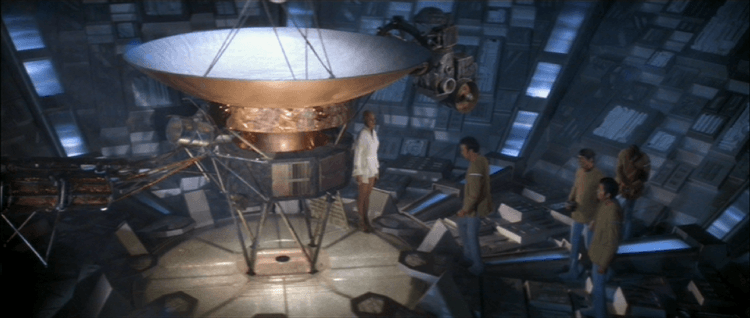
Let’s cut right to the chase here. I’ve always really liked this one. Yes, I know its something of a minority opinion, and no, my thoughts on the matter aren’t so unorthodox that I’d rate it about ‘Wrath of Khan’ or anything like that, but ‘The Motion Picture’ is a better movie than it gets credit for. This film was a key part of my early ‘Star Trek’ fandom, so I’ll admit some bias in that respect, but I do honestly feel that ‘Star Trek: The Motion Picture’ is a movie whose merits tend to be overlooked due to its rather checkered (and, to be fair, not entirely unearned) reputation in fandom. In fact, for all its imperfections, there’s something quintessentially ‘Star Trek’-ish about ‘The Motion Picture’, perhaps moreso than any of the movies that have come since. It’s something that yes, comes from the film’s focus on confronting the unknown, but also the sense of wonder evoked by the visual effects. The often languid pace (They don’t call it ‘The Motionless Picture’ for nothing, folks!) actually helps in this regard, as it lends itself to a more cerebral story than the phaser firing frenzy of films like ‘Nemesis’ or the reboot movies. In fact, before I made a very public peace with it earlier this year, ‘TMP’ was my go-to palate cleanser after watching a new Kelvin film.
And of course, the closing title card says it all: “The human adventure is just beginning…”
Besides all that, it’s hard not to admire a movie that gets greenlit on the back of ‘Star Wars’ only to pattern itself after ‘2001: A Space Odyssey‘. Both great sci-fi films, to be sure, but they couldn’t be more different stylistically. And like ‘2001’, ‘The Motion Picture’ is a visual feast. And in fact, from the moment ‘The Motion Picture’ became, well, a motion picture, there was a conscious effort for the film to live up to the visual effects bar set by ‘Star Wars’ and ‘2001’ (Douglas Trumbull, an effects supervisor on ‘2001’, was eventually recruited for a similar position on ‘TMP’) and it shows. There is a sense of grandeur to the film’s visuals that is rarely equaled, not just in ‘Star Trek’ but in sci-fi cinema generally. There’s also an unusual sense of scale that results from the way the models (to say nothing of the V’Ger cloud) are shot. That scale is apparent on home video, but more than anything else this is what stood out to me when I attended an anniversary screening earlier this year. Of course, it’s not just the sense of scale, it’s also the detail that went into the models. Just look at the close ups of the Klingon ships at the beginning to see what I mean. And then of course, there’s the Enterprise. Of all the variations on the design of the iconic ship that we’ve seen over the decades (the original series, ‘The Motion Picture’, the Kelvin films, and now ‘Star Trek: Discovery’), this may well be the best. It refines everything that worked about the original, adds all sorts of new surface details (Docking ports! Torpedo launchers!), and it looks good doing it!
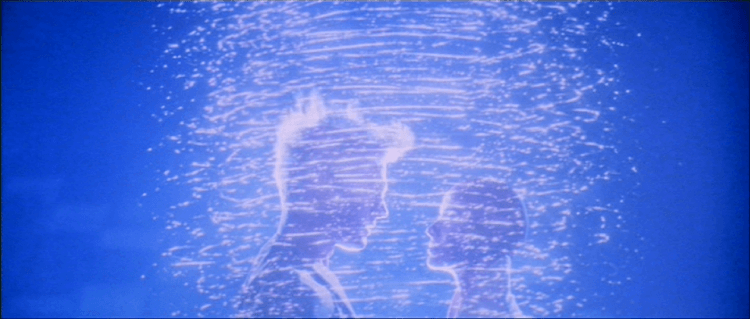
Of course, the dark side of all this is the starship porn – that is, the tendency of the camera to linger on the models. It can grind the film to a halt and leave you screaming “We get it! It’s pretty! Can we please get on with it?” The most famous (or perhaps infamous) example of this is Kirk’s shuttle ride to the Enterprise. But you know what? At least in that instance, I get it. The model work is incredible, the effects are spectacular and as overlong as the starship porn bits can be, they’re gorgeous. But more than that, it’s a victory lap. Yes for Kirk, but also for the audience. We live in an age where shows as varied as ‘The X-Files’ and ‘Roseanne’, can get years later nostalgia-fest revivals, but for a cancelled cult hit it’s still not exactly de rigueur. So imagine you’re one of those ‘Star Trek’ fans who watched it first run. Maybe you even participated in the letter writing campaign that got us a third season. You watched it gain popularity in reruns, and now you’re watching it as a big budget movie. So sure, it might be long and self-indulgent, but this is your punch-the-air moment!
On top of all that, ‘The Motion Picture’ also defined the look of ‘Star Trek’ for years to come, to such an extent that in this regard it is arguably more of an influence on later productions that the original series. Some of this is practical – the ‘TMP’ Enterprise corridors were repainted and reused on ‘The Next Generation’, for example, and the same show would use the movie bridge set for the Enterprise-D’s battle bridge (not to mention the bridges of countless passing Federation ships). But it also ushered in a design sensibility that is present to varying degrees throughout all of the spinoffs. Even the look of ‘Star Trek: Discovery’ owes more to the ‘The Motion Picture’ than to the original series.
We also can’t talk about ‘Star Trek: The Motion Picture’ without mentioning the soundtrack. In much the same way the film redefined what ‘Star Trek’ looked like, it also defined what it sounded like for years to come. Jerry Goldmith tends not to get the same sort of effusive (and well-earned) praise for this that John Williams does for ‘Star Wars’, which frankly is a crime. I suspect that’s partly because of the baked-in flaws of the movie, but in many ways, Goldsmith’s score is one of the film’s biggest saving graces. Let’s try a thought experiment. Close your eyes and try to imagine the film without it. Think of the long stretches of special effects-laden silence we’d be sitting through without an underscore and you’ll start to see just what the score brings to the proceedings. It’s not just a question of imagining it without music. Imagine it with literally any other composer. It may have turned out just fine, but as important as Goldsmith’s score is to the feel of the film, replacing him with, say, James Horner (who would supply a similarly excellent score for ‘The Wrath of Khan’ a few years later) would have thrown everything off, and let’s be honest, ‘TMP’ is a house of cards as it is.
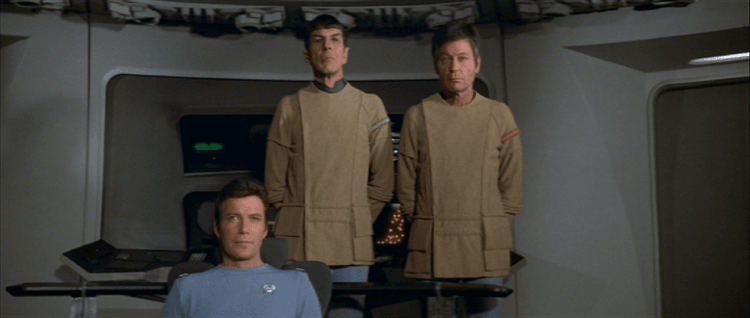
I should also note that – unusually for a ‘Star Trek’ movie – there are three versions of the film. There’s the original theatrical cut (which is exactly what it sounds like), the Special Longer Version (which was originally assembled for TV broadcasts and later made widely available on VHS), and the Director’s Edition re-edit described earlier. So what did I watch for this review? Well, this week I watched the Director’s Edition, but I’ve also watched the theatrical fairly recently (though not specifically for this column), so I feel comfortable contrasting the two. And if you’re only going to watch one version of ‘Star Trek: The Motion Picture’, the Director’s Edition is the way to go. Granted there’s only so much you can do to polish a forty-year-old film, but broadly speaking, it’s more tightly paced when compared to the theatrical cut, the new edit restores a number of character beats, particularly with regard to Spock, plus all of the visual effects are actually finished, which is nice. This is the definitive version of ‘Star Trek: The Motion Picture’. Too bad it still hasn’t been released on Blu-ray.
With all that finally said and done, what do you think of ‘Star Trek: The Motion Picture’? Let us know in the comments and be sure to check back in two weeks for the final ‘Final Frontier Friday’ of 2019!
As for me? I’ve covered enough ‘Star Trek’ movies this year. I assure you, it’s going to be quite a while before I do it again! Might even make it a resolution for 2020…
